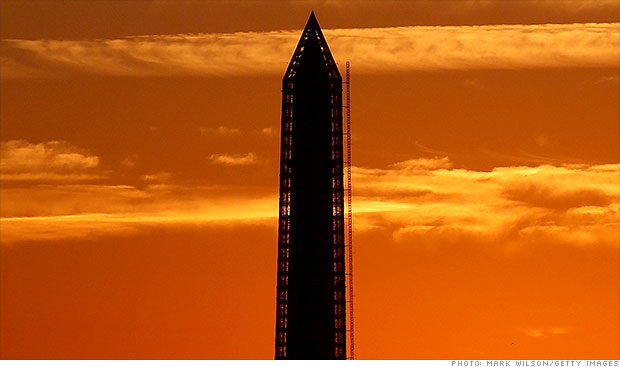
After Congress failed to reach a deal on spending, the White House ordered federal agencies to begin to power down the government.
NEW YORK (CNNMoney)
Many parts of the government technically shut down as the clock struck midnight and the new fiscal year began without a budget.
But the actual powering down of the government's sprawling business won't start in earnest until Tuesday morning when offices are scheduled to open.
It had become clear as Monday night wore on that Congress would not reach an 11th-hour deal to fund the government.
Shortly before midnight, the White House Office of Management and Budget ordered agencies to implement their shutdown plans.
The agencies have been finalizing those plans in recent weeks as the possibility of a shutdown grew.
Related: Complete shutdown coverage
There is not a lot of precedent for actual shutdowns -- the last one started in late 1995 and lasted 21 days.
But Congress, because of its longstanding penchant for doing budget deals at the last minute, has given agencies plenty of experience planning for shutdowns. Agencies had last put together full-blown contingency plans as recently as 2011.
This time around, of the approximately 3.4 million federal employees, an estimated 821,000 workers will be furloughed without pay, according to a CNN analysis of federal agency shutdown plans.
But furloughed workers must be given official notice of the furlough, said Colleen M. Kelley, national president of the National Treasury Employees Union.
So they will be expected to show up for work on Tuesday morning, both to get their notice and to help with the shutdown of operations. Some agencies may issue notices electronically and let some of their employees perform their shutdown duties remotely.
By many estimates, an orderly shutdown will take no more than four hours to complete.
What has to happen to suspend operations? That all depends on what agencies and their employees are working on.
Related story: 'Panda cam' to go dark in shutdown
The Office of Personnel Management, for example, will play a key "government-wide role" in a shutdown. Its activities include sending out furlough notices, following up to make sure employees were properly notified, and meeting legal requirements for keeping records.
Then there's the hand-off of duties from employees deemed "non essential" to those required to work throughout the shutdown.
At some agencies, parts of a furloughed worker's job -- if they are required by statute -- will still have to be performed. So the furloughed employee may need to make clear what must happen in his absence before leaving on Tuesday.
Planning for and executing an orderly shutdown is complicated by the breadth of government services, programs and national treasures that would be affected by a lapse in funding and by the many rules governing who should be furloughed.
Indeed, the energy and resources that go into such planning could have been put to better use.
"The amount of time being spent by agencies ... it's really a waste," Kelley said. ![]()
First Published: October 1, 2013: 12:20 AM ET
Anda sedang membaca artikel tentang
Shutdown: What happens next
Dengan url
http://bugarasakti.blogspot.com/2013/10/shutdown-what-happens-next.html
Anda boleh menyebar luaskannya atau mengcopy paste-nya
Shutdown: What happens next
namun jangan lupa untuk meletakkan link
sebagai sumbernya
0 komentar:
Posting Komentar